‘Inside’: A Tale of Three Mothers [Matriarchy Rising]
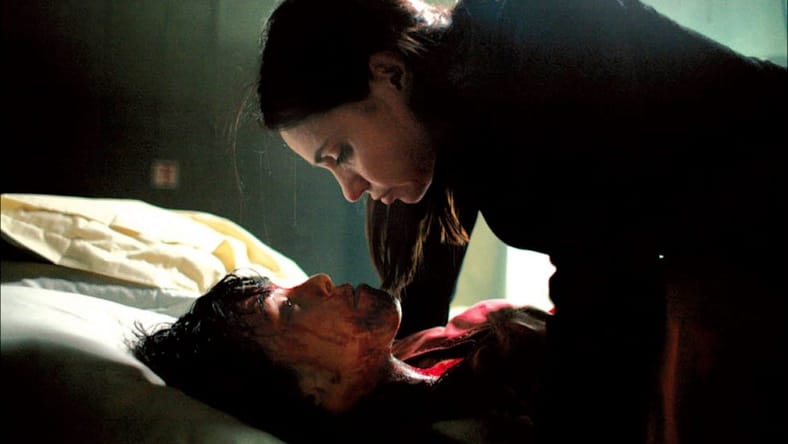
Mother’s Day is a famously complicated holiday. For everyone celebrating with a corsage, long-distance call, or family brunch, there are many others who choose to hide on this particular Sunday in May for fear that the joy surrounding them will amplify their own sorrow. The relationship between mother and child is perhaps one of the most complex bonds humanity has to offer. For many, it’s the act of giving your own body to create another. For others, a legacy of impossible standards. Still others struggle to accept a body that doesn’t match the maternal ideal upheld by a patriarchal society, and many more see the day as a reminder of the family they’ve lost or the idyllic upbringing they never had.
No film explores the brutality of motherhood quite like Inside. This French film from Alexandre Bustillo and Julien Maury, follows three different mothers, each dealing with emotional wounds. Sarah (Alysson Paradis) is a pregnant widow reluctant to bring her child into the world. The Woman (Béatrice Dalle) attempts to quell the pain of her own loss by stealing Sarah’s baby. Sarah’s mother Louise (Nathalie Roussel) falls into the gears of their violent battle and dies while attempting to care for her own adult child. This near-flawless film falls into the category of New French Extremity and features one of the most violent birth scenes in recent memory. But, Inside also explores the emotional pain of motherhood. Each of the film’s three mothers reveals a different aspect of the archetype and approaches the role of mom in a uniquely painful way.
Also Read: Killer Women With An Axe to Grind, Part 2: ‘Axe’, ‘Slut’, And Reclaiming Agency
Widowed photographer Sarah settles into her home for a quiet Christmas Eve. One day away from giving birth, she rejects an offer to spend the holiday with her mother Louise and arranges to have her boss drive her to the hospital the next morning. She spends the evening dreading the imminent delivery and mourning her husband who died months before. When a stranger knocks at the door, Sarah is plunged into a waking nightmare. Dressed all in black, the mysterious Woman breaks into Sarah’s house and attempts to cut the baby from her womb. Having lost her own pregnancy in the crash that killed Sarah’s husband, the Woman will stop at nothing to reclaim the baby she believes is rightfully hers. As the night wears on, Sarah fights back and wages a brutal battle for her own life and the life of her child.
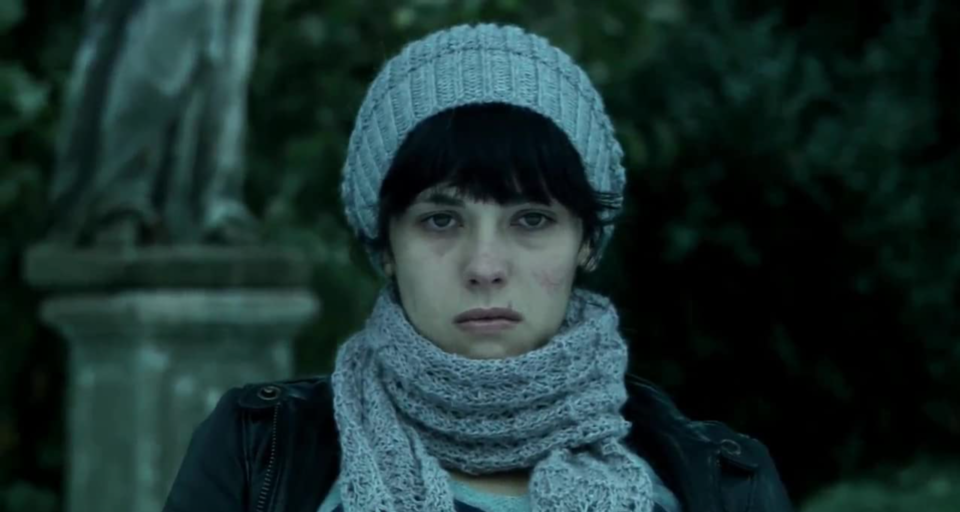
Many fans celebrate Inside for its authentic depiction of reluctant parenting. Still in mourning, Sarah grieves not only for her husband, but for the family they had planned to create together. Visiting a park after her final ultrasound, she gazes longingly at a young couple playing with their toddler, a microcosm of the life she envisioned for herself. We have no idea how she felt about children before her husband died, but she doesn’t seem to want the baby now. Given her loss, this detachment is completely understandable and Bustillo and Maury do not shame her for her coldness.
Also Read: ‘Yellowjackets’ Season 2: The Genius Of Lauren Ambrose as Adult Van
She hadn’t planned to be a single mother and the weight of raising a child on her own now seems too much to bear. Not only will she have to get through the long days and nights alone, but the baby (who may look like her deceased husband) will be a daily reminder of everything she’s lost. We don’t often get to see mothers dread the arrival of their babies, but it’s an honest emotional response to one of life’s most stressful transitions. Nearly every pregnant person experiences at least one moment of trepidation or even regret, but few feel comfortable talking about it.
Many cisgender women have been raised to believe that not only are we born to bear children, but that becoming a mother is the pinnacle of femininity. We are said to have a biological clock that begins ticking from birth and gradually speeds up on our unwavering path to the birthing bed. Not only is there an intense stigma around abortion, but even suggesting you might not want children is likely to be met with dismissal or even outright scorn. Those who choose to remain child-free often keep this decision a closely guarded secret. Regardless of the circumstances, Sarah’s reaction to her pregnancy is completely valid and refreshing to see on screen.
Also Read: Lights Out: Don’t Watch These 10 Horror Movies If You’re Scared Of The Dark
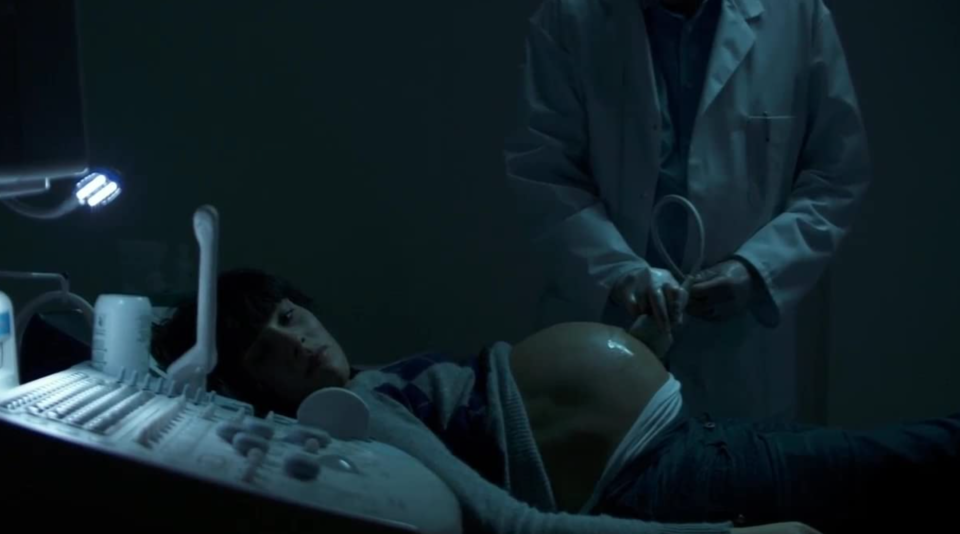
Just a day away from meeting her child, Sarah seems miserable at the thought of giving birth. The brutality of Inside can be interpreted as a parallel to the birthing experience lending validity to her fears. The Woman’s scissors stabbing her belly in the middle of the night mirror contractions that signal the beginning of labor. The wound on her mouth resembles an episiotomy: an incision designed to prevent tearing the vaginal canal. Her throat injury represents oxygen administered during traumatic labors to keep the mother calm, and the crude opening the Woman cuts in her abdomen is reminiscent of a cesarean birth. Many people choose not to have children simply to avoid this excruciating pain.
Minutes after the Woman first attacks, Sarah’s water breaks. Not only is she forced to defend her life while trapped in a tiny bathroom, but she must do so while enduring debilitating contractions. Despite her agony, Sarah continues to fight until her strength is gone, though it’s never clear exactly who she’s fighting for. She likely does not wish harm to come to her unborn child, but she never pleads for its life or offers to trade her own for a safe delivery. After escaping the bathroom, she holds a knitting needle to her belly and threatens to harm the baby herself if the Woman does not back off. We don’t know if she would actually follow through on this threat, but her act of self-preservation is presented with shocking compassion. Sarah simply wants to live and she is willing to sacrifice the fetus in her womb to do so.
Also Read: ‘Teeth’ and The Anatomical Possibilities of Vagina Dentata [Science Of The Scare]
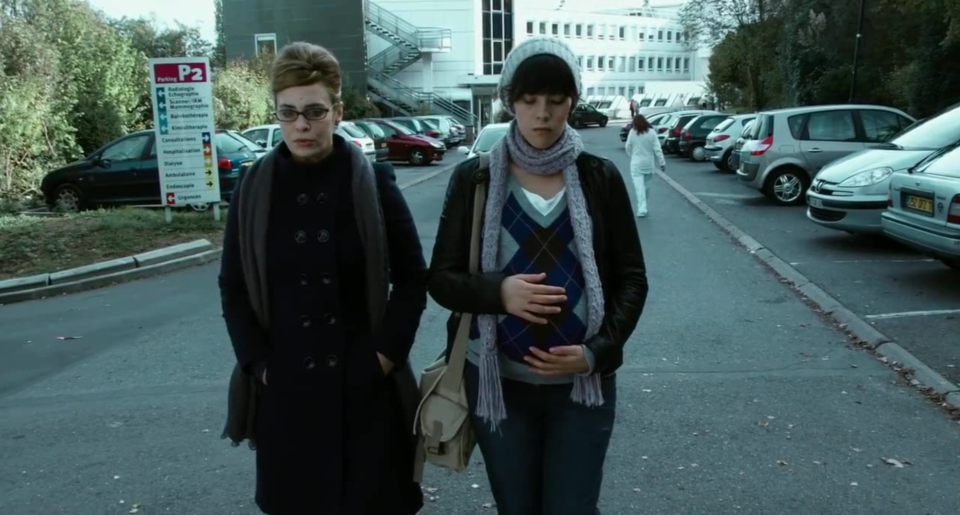
Sarah is not just a mother-to-be in the film, she is also a child. Yet even this relationship causes her pain. Early in Inside, Sarah has a terse conversation with her mother, calling her Louise and essentially rejecting her maternal concern. This is probably Sarah’s first Christmas since the accident and it’s understandable that she might want to be alone. It’s also likely that in her depressed state, she doesn’t want to be around someone who will remind her of the mom she will soon become. Louise seems to understand this, though it probably feels like a devastating rejection. She resigns herself to caring for her daughter from afar, but insists she will be there should Sarah need her.
Mother’s Day can feel particularly challenging for those separated from their moms. Whether through geographical distance, estrangement, or death, the day often seems to amplify this absence and exacerbate the pain. During the film’s blood-soaked climax, Sarah screams for her mother as the Woman cuts into her stomach. Desperate for comfort, she reverts to the language of a child and calls her Mommy. Those who have lost their mothers likely feel her cries and share in her sorrow. Others have mothers who are living but with whom they no longer speak. Due to quarrels or misunderstandings, they must watch as everyone else enjoys a maternal relationship they no longer have.
Also Read: ‘Savage Weekend’ And The Unapologetically Queer Nicky [The Lone Queer]
It’s worth noting that Inside is set against the backdrop of Christmas, a holiday in which we celebrate a miraculous birth and the most famous mother in history. The Virgin Mary serves as an image of self-sacrifice and maternal perfection, but her story is an impossible standard; her serene birth is a fantasy. If we continue holding her relationship with an immaculate infant as the standard for mothers and children, we will all inevitably fall short.
When Inside begins, Louise’s relationship with her child is tense, but there is hope for a reconciliation. The distance between them stems from a tragedy outside of their control and it’s likely that with time, Sarah would find her way back to her mother’s arms. Sadly we will never get to see this reunion. Both mothers lose their lives to a third mother desperate to find for herself the relationship Sarah and Louise once had.
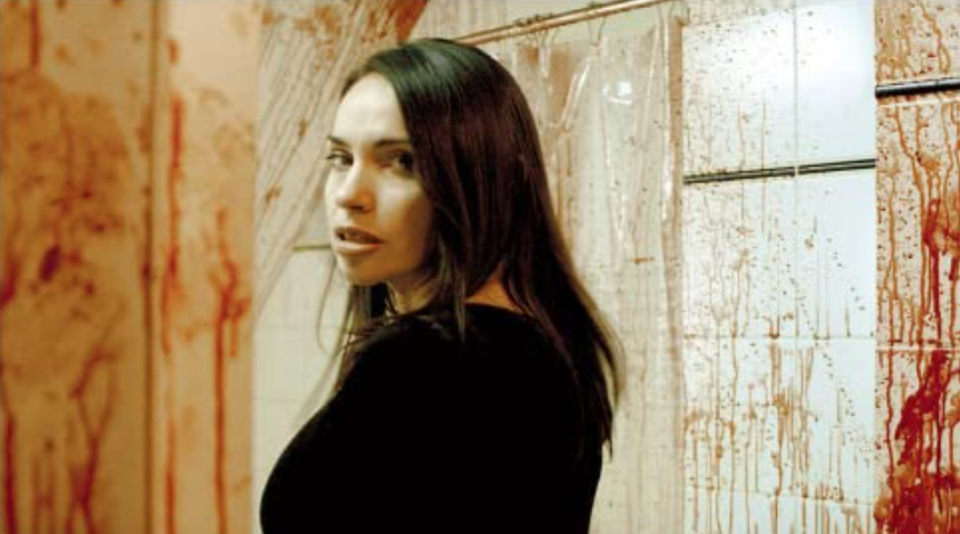
Inside begins with an unexpected tragedy. A baby sleeps in the womb hearing the faint sound of its mother’s voice and then the crash of two cars. We learn in the final act that this mother is not Sarah, but the Woman, and that her baby did not survive. We don’t know who was to blame for the accident, but the Woman believes Sarah has stolen her chance to be a mother. Adding insult to injury, she’s enraged to find that Sarah no longer even seems to want the child the Woman is so desperate to have.
Also Read: 5 Disturbing Queer Horror Films To Keep You Up At Night [New Queer Extremity]
While extreme, the Woman’s feelings are relatable. Whether from pregnancy loss, infertility, or unrelated tragedy, people who lose the ability to give birth often feel betrayed by others who seemingly glide through the process easily. Those struggling with infertility often resent mothers who get pregnant by accident and women suffering miscarriages sometimes find themselves enraged by mothers choosing to abort healthy pregnancies. These are all natural responses to the complicated reality of birth and another way women are pitted against each other by the patriarchy. The problem is not that some women have an easier time giving birth than others, but that our culture has put such a premium on a wholly uncontrollable facet of life.
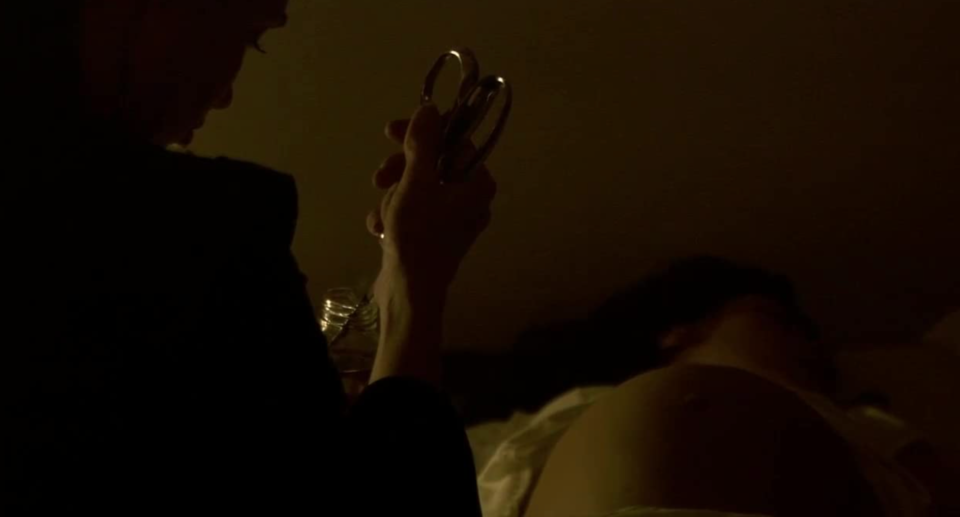
When the Woman loses her child, she does not consider adoption. She goes to extreme and even murderous lengths to attain a baby even though she endangers the very child she claims to love. The Woman wants revenge against the person who stole her right to identify as a mother while fetishizing Sarah’s pregnant body. She will not only steal Sarah’s baby, but also her experience of motherhood.
Also Read: ‘The Unheard’: The Horrors Lost In Transmission
Despite medical advancements, pregnancy, conception, and birth still remain largely uncontrollable. Miscarriage and infertility are unfortunately common but many women are reluctant to share their experiences with anyone who hasn’t been there as well. It’s not uncommon for someone to have a miscarriage and only then discover that several of their friends have experienced the same loss. Many feel a sense of shame and certainty that their bodies have failed in some way. In a culture that defines womanhood as a working womb, it’s easy to conflate one’s worth with the ability to have children. With Inside, we don’t know anything about the Woman other than that she wants Sarah’s baby. But her actions can be interpreted as a desperate attempt to reclaim her lost womanhood.
Inside is often categorized as a Christmas film, but the story also reflects the pain many feel on Mother’s Day. We mourn with Sarah, Louise, and even the Woman for the lives destroyed in search of an impossible ideal. The film’s power lies not in its vicious violence, but in its exploration of the relatable fears and sorrow many of us are too afraid to articulate. Whether children or mothers, we can all see ourselves in the messy reality of a story that so often goes wrong. The horror comes from speaking these truths out loud, but that’s also where the relief lies. By watching this brutally beautiful film, we can perhaps find solidarity as we battle through the tricky maze of motherhood and the day that celebrates its unattainable ideal.
Categorized:Editorials Matriarchy Rising News

